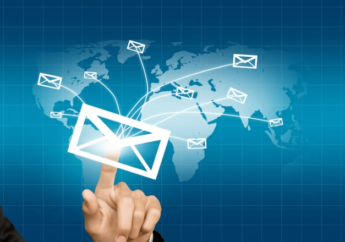3 Examples That Prove Good Marketing Is A Game-Changer For Nonprofits
by Arnab Dey Marketing Published on: 15 February 2023 Last Updated on: 25 September 2024

Running a nonprofit is tough.
Aside from the daily challenges that operations bring, finding donors and qualifying for grants are highly involved processes that can make or break your organization. Amid such challenges, finding the time to create and execute marketing campaigns can seem impossible.
You might even wonder why nonprofits need to focus on marketing. A marketing plan for nonprofits is much more than running a few paid ads and waiting for donations to roll in. Marketing builds your nonprofit’s brand image, a critical differentiator when donors pick between different organizations to donate to.
As wonderful as it might be to have your cause drive donations, competition is intense in the nonprofit sector. Marketing can help you raise far more than you can imagine when done well.
Here Are Three Best Example That Prove Good Marketing Is A Game-Changer For Nonprofits
Here are 3 examples that prove the worth of a well-thought-out nonprofit marketing campaign.
1. Stand up to Cancer
Founded as one of the charity arms of the Entertainment Industry Foundation (EIF) in Hollywood, you might think that Stand up to Cancer’s (SU2C’s) success was preordained. After all, how hard can it be to raise money when you can draw from an endless well of celebrities?
However, the reality was different. SU2C is one of the few EIF programs that are successful, and marketing is the real driver behind its success. Before launching its drive, SU2C partnered with marketing agency Brand-Knew to redesign its website, revamp its social media, and design its messaging channels.
The agency crafted messaging topics such as spotlighting cancer survivors, partnering with major events (such as plastering the charity’s message on American Airlines’ planes,) and creating dedicated pages to felicitate the group’s researchers.
While most charities gloss over the nuts and bolts of their work, SU2C went the other way and placed its researcher centerstage. The result was a dramatic uptick in donations, to the tune of $603 million pledged over a decade.
SU2C’s success shows that nonprofits must continuously evolve and work on their marketing messaging to remain relevant, no matter how valid their causes are.
2. ALS ice bucket challenge
Social media challenges are pretty normal these days. TikTok produces a raft of bizarre and funny challenge prompts that promptly disappear after a few weeks. Back in 2014-15 though, social media challenges were relatively new.
The ALS ice bucket challenge is an example of an organic campaign that went viral due to a combination of several factors. Aside from the relative uniqueness of the “challenge” format, social media organic reach was at an all-time high. The challenge itself was common in charity circles where a participant was doused in cold water (or icy water) and then donated to a charity of their choosing.
Pro golfer Chris Kennedy decided to tie the challenge to the disease, and word spread in golfing circles. The campaign went viral when legendary golfer Greg Norman doused NBC host Matt Lauer live on air and this prompted a wave of people donating and undertaking the challenge.
While this initial outbreak of virality was unplanned, the ALS Association and assorted ALS charities took full advantage of the phenomenon. Of particular note was the messaging surrounding the disease and the sheer cost of research (close to $2 billion to move from research to launching a cure.)
This kept the campaign going and even prompted a relaunch in late 2015. Overall, the campaign raised $220 million in 2014, with successful fundraisers subsequently.
3. UNICEF tap project
The tap project originally began as a dare issued by Esquire magazine to ad executive David Droga in New York. The magazine challenged him in 2006 to create a brand for positive change using a single page of the magazine. A year later, Droga brought UNICEF’s tap water project on board, and the movement began.
A year might seem like a long time, but Droga took the time to conceive a marketing philosophy that sustains the campaign to this day. The idea was to connect something people took for granted to something scarce in other parts of the world. Thus, free tap water was connected to drinking water in less fortunate parts of the world.
Originally launched in Esquire’s pages, the UNICEF tap project convinced readers to donate $1 for every glass of tap water they consumed in restaurants. With the magazine on board, Droga tapped into its network of celebrities to publicize the event. Donations began pouring in.
Like SU2C’s campaign, the tap water project evolved. As Facebook grew in popularity, the campaign spread on the platform digitally, with users encouraged to open virtual taps after donating by tagging three friends in their network who could donate.
In the physical world, celebrity tap water became a thing with the likes of Selena Gomez and Rihanna purchasing branded tap water for the price of a donation. The project was also one of the first nonprofit campaigns to optimize for mobile, launching an app.
However, the catch was that the app would monitor phone usage. Every 15 minutes a person went without using their phone would result in a dollar donated. Like the connection between free tap water and fresh drinking water, this campaign prompted people to rethink actions they took for granted.
Marketing for nonprofits is essential
As these 3 campaigns show, marketing plays a huge role in spreading a nonprofit’s message. While leveraging your cause is a great way to get people on board, you’ll create better results by tapping into popular trends and crafting a compelling message.
Read Also:







































































































